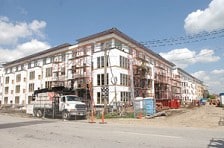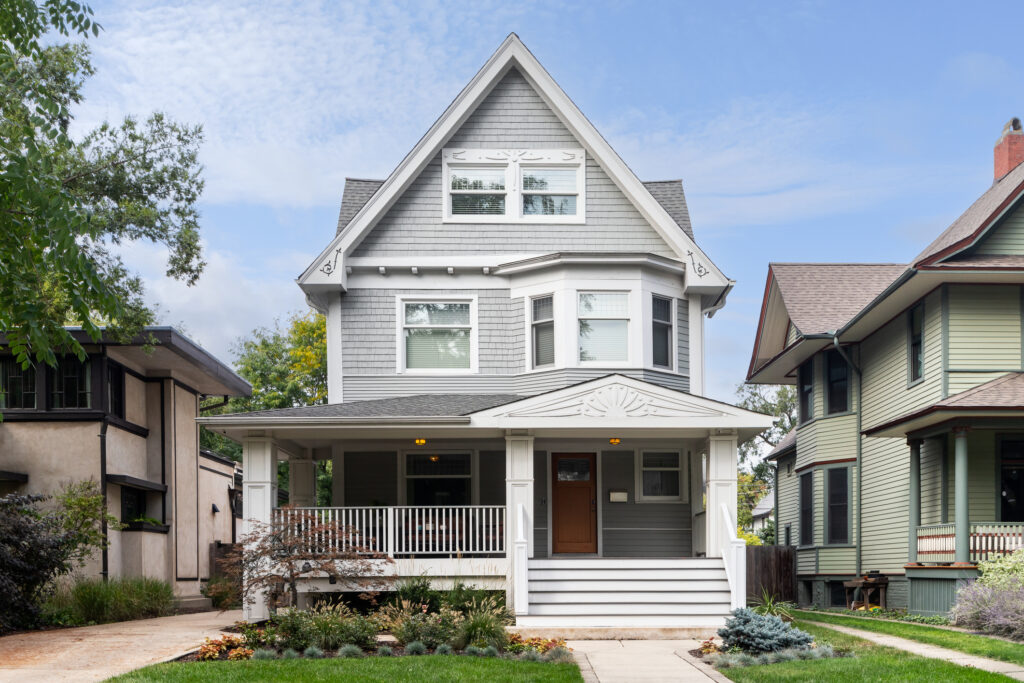Downtown housing options swell

AP Lofts, a 70-unit market-rate apartment complex at 328 S.W. Fifth St., opened this month as an out-of-state developer hastens to complete a nearby affordable-housing project and a mixed-income development.
By Jan. 1, the three projects, which are all located within a couple of blocks of the Science Center of Iowa, will add a total of 166 affordable-housing and 81 market-rate units to the downtown market.
Jake Christensen, co-owner of AP Lofts, which operates as ND 25 SW 5th LLC, said the renovation of the L & L Insulation Building into AP Lofts is 99 percent complete. On Thursday, Christensen said 17 of the 70 units were occupied and more leases are pending.
Minneapolis-based Sherman Associates Inc. is nearly finished with the build-out of Rumely Lofts LP, a 66-unit low-income housing project at 104 S.W. Fourth St., which is slated to include 4,500 square feet of retail space.
Sherman, which is working to attract interest in commercial and residential development in its Gray’s Lake Office Park and Gray’s Landing projects, respectively, including the proposed construction of two hotels, is expected to wrap up the historic Rumely Building’s renovation in September.
Sherman is also busy with its Metro Lofts project at 255 Vine St. That development, which carries an estimated $20 million price tag, will include 100 affordable-housing units and 11 market-rate apartments. It is expected to be complete by Dec. 31.
All three projects got off to a rocky start.
Jay Trevor of Chicago-based J&T Development Inc. had proposed converting the L & L Insulation Building, as well as the Rumely Building, into mixed-income “live and work” apartment communities before a shortfall in financing halted those efforts.
Dick Sontgerath of Seattle’s Heritage Affordable Housing also had presented plans to renovate the Rumely Building until his financing efforts were thwarted.
And Sherman, which in 2005 proposed to develop condominiums at 255 Vine St., changed its plans as a soft market convinced the company that the site would be better suited for a mix of market-rate and low-income rentals units.
Jackie Nickolaus, Sherman’s vice president of development, said in May, “It became obvious four years ago that the market for downtown condos was not robust.”
But the economic downturn, which stopped many would-be investors from purchasing the low-income housing tax credits typically sold by developers to generate equity in their projects, stalled the new approach.
In April, however, after WNC & Associates Inc., an Irvine, Calif.-based tax-credit syndicator, backed out of its commitment to purchase the nearly $1.8 million in low-income housing tax credits awarded by the Iowa Finance Authority to Metro Lofts, Sherman found a new buyer and broke ground.
Rick Hailey, a project superintendent with Frana Cos., the Minnesota-based contractor selected by Sherman to oversee the construction of Metro Lofts, said that project is around 60 percent finished and is scheduled to be completed on time.
Don Weckop, a Frana superintendent who is managing the 106-year-old Rumely Building’s renovation, said a majority of those apartments are finished and the building is expected to obtain a certificate of occupancy on Sept. 1.
By then, he said, only a few details of the build-out, such as retouching paint in the 800- to 900-square-foot units and washing their stained concrete floors, should remain.
“That’s a beautiful addition to this city,” Hailey said.
The taller portion of the L & L Insulation Building is seven stories, and includes a rooftop patio that can accommodate about 120 people. It was originally constructed to house a wholesale grocery facility.
“This was built as Des Moines’ first fireproof warehouse,” Christensen said, noting that the building’s construction type and fire rating allowed for such a large patio, as well as the addition of a rooftop fire pit. “I’m pretty sure it’s the only rooftop deck in Des Moines that can have fire,” he said.
“I think anyone could enjoy living here, but I think the demographics in this building are going to be most likely younger people,” he said, referring to the industrial feel of AP Lofts’ bell-shaped columns, concrete ceilings and other features.
Historic tax credits and Enterprise Zone tax credits helped ND 25 SW 5th LLC finance the approximately $13 million remodel of the 101-year-old L & L Insulation Building, which Christensen said is in line to be added to the National Register of Historic Places.
Rents at AP Lofts range from $680 for a studio apartment to $1,500 for a three-bedroom unit. There is no mortgage on the 79,000-square-foot property.
This fall, at a cost of $14.7 million, Christensen hopes to begin construction on about 100 market-rate apartments in the Fleming Building at 604 Walnut St. He also plans to develop a 93-room Hyatt Place Hotel in the Liberty Building at 418 Sixth Ave.
Last year, he completed the build-out of e300, a mixed-use development in the East Village that includes 79 market-rate apartments.
Hubbell Realty Co. also hopes to move forward with a downtown affordable-housing project in the former Schmitt-Henry Manufacturing Co. complex, also known as the Sealy Building, for which it hopes to obtain low-income housing tax credits.
According to Steve Niebuhr, Hubbell’s senior vice president of construction and management services, the developer expects to learn by the end of August if its proposed River Point Lofts project at 309 S.W. Eighth St. will be awarded the credits by the Iowa Finance Authority.
From a financing prospective, Hubbell contends the feasibility of that 91-unit project, which would cost an estimated $14.8 million, is dependent on the receipt of the credits. “We’re waiting to hear the outcome,” Niebuhr said. Hubbell’s position is that the demand for more affordable downtown housing is enough to warrant the award.
Niebuhr said his company would also like to convert the Hawkeye Transfer building at 702 Elm St. – more commonly known as the Rocket Transfer building – into condominiums. But Hubbell will wait for the right market conditions before moving forward with that proposal, he said.
For now, Hubbell will continue to operate the Hawkeye Transfer building, which was built by the late Frederick Hubbell, as a storage facility.
A number of other affordable-housing proposals are popping up around the metro area, including Hubbell’s plans to construct 35 cottage-style units in Johnston and 60 apartments in Norwalk. The company is currently developing 84 units of low-income housing at 5515 S.E. 14th St. in Des Moines.
Affordable-housing projects may have a competitive advantage over market-rate apartments downtown, Christensen said, as the central city attracts more young professionals, recent graduates and other renters who, based on their level of income, may qualify to dwell in them.
But both markets have room to grow, he said.
“If the projects are well located or designed well, I think there’s a demand for market-rate apartments and subsidized housing,” Christensen said. “I think that there’s always been a contingent of low-income housing tax credit projects that have a mix of 60 (percent), 80 (percent) and 100 percent of median income. Yet every one has managed to fill up,” he said.
“Des Moines has done an incredible job of giving people a reason to want to live downtown, and I think people will continue to filter in here. So I think there is a need for both.”











